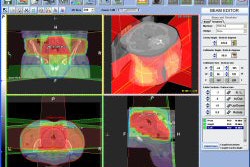
NEW YORK (Reuters Health), Sep 9 - The results of a new study suggest that patients receiving long-term warfarin therapy do not need to stop the drug prior to coronary angiography.
According to the report in the American Journal of Cardiology for August 15, continued warfarin therapy does not increase the risk of bleeding or access-site complications, provided that INR levels are not supratherapeutic.
Guidelines typically recommend that warfarin-treated patients stop the drug and achieve INR levels of less than 1.8 before undergoing invasive procedures, Dr. K. E. Juhani Airaksinen, from Turku University Hospital in Finland, and colleagues explain. Bridging therapy with low-molecular-weight heparin is usually given during the procedure until the INR is restored to therapeutic levels, the authors note.
The down side of this bridging therapy, however, is that it may prolong hospitalization and increase the risk of thromboembolism. In the present study, the researchers compared the outcomes of 258 warfarin-treated patients with those of 258 controls who underwent coronary angiography. The subjects were matched for age, gender, and disease presentation.
The warfarin group included 178 patients who received uninterrupted warfarin and 80 who had the drug interrupted, including 24 in whom bridging therapy was instituted.
In the overall analysis, the warfarin group was not significantly different from the control group in the rate of access site and bleeding complications (1.9% versus 1.6%) and the rate of major adverse cardiovascular and cerebrovascular events (0.4% versus 0.8%).
In the warfarin group, the INR level was higher with uninterrupted warfarin therapy, but this did not translate into an increased risk of access site or bleeding complications. An INR level greater than 3, however, did increase the odds of access site complications relative to a therapeutic INR (2 to 3): 9.1% versus 1.5% (p < 0.05).
"A simple strategy of performing coronary angiography during uninterrupted therapeutic warfarin anticoagulation is a tempting alternative to bridging therapy and is likely to lead to considerable cost savings," the authors conclude.
Am J Cardiol 2008;102:386-390.
Last Updated: 2008-09-09 8:30:36 -0400 (Reuters Health)
Related Reading
Long-term anticoagulant users show elevated coronary, aortic calcium, December 2, 2005
Copyright © 2008 Reuters Limited. All rights reserved. Republication or redistribution of Reuters content, including by framing or similar means, is expressly prohibited without the prior written consent of Reuters. Reuters shall not be liable for any errors or delays in the content, or for any actions taken in reliance thereon. Reuters and the Reuters sphere logo are registered trademarks and trademarks of the Reuters group of companies around the world.

















